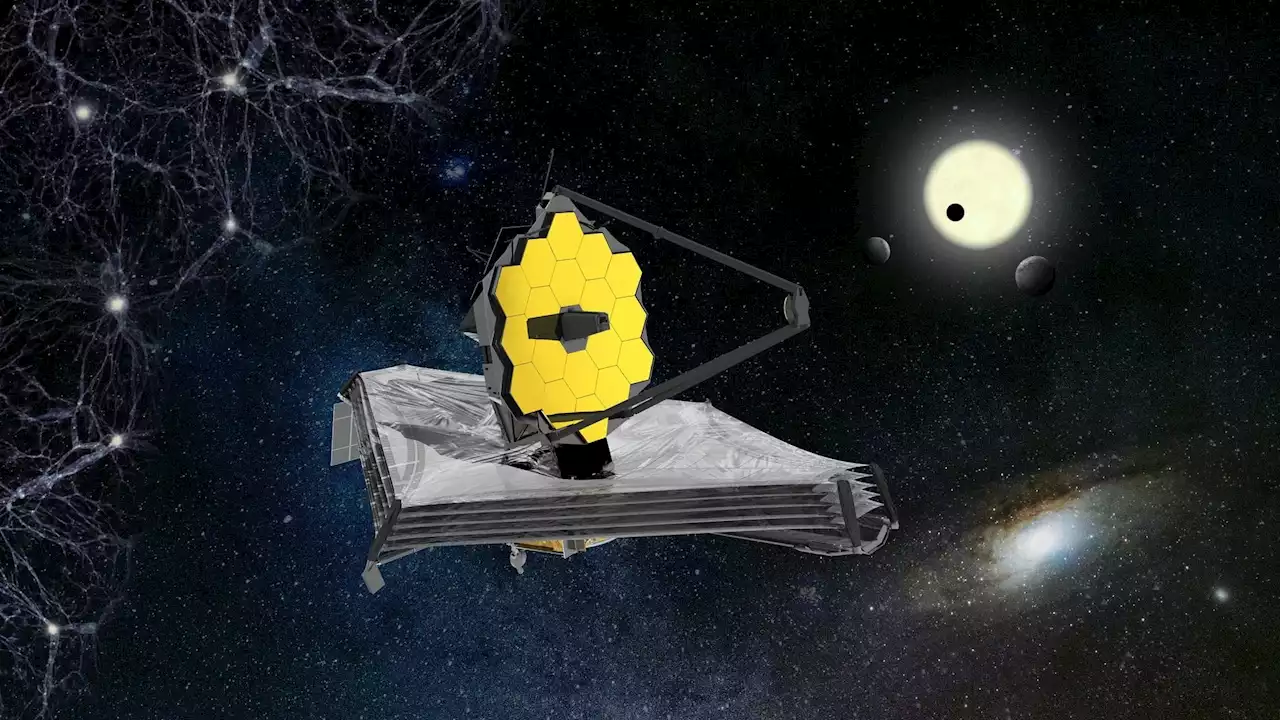A researcher working with the JamesWebbSpaceTelescope has shared information about how it will look back in time at some of the earliest stars and galaxies.
Once the James Webb Space Telescope begins science operations this summer, it will the world’s most powerful space telescope, and it will open new avenues for astronomy research. One of the researchers who will be working with James Webb, Massimo Stiavelli, the Webb Mission Office head at the Space Telescope Science Institute, has shared more information about how Webb will look back in time at some of the earliest stars and galaxies.
Because light takes time to travel, the further away from Earth we look, the earlier we are seeing in the development of the universe. Webb will be able to see more distant galaxies than ever before, allowing researchers to get a glimpse of the early stages of the universe. By looking at the composition of these very early stars and galaxies, researchers can get an idea of what was happening in the few minutes after the Big Bang.
“The chemical composition of the early universe, just after the big bang, is the product of the nuclear processes that took place in the first few minutes of the universe’s existence,” Stiavelli said, as shared in a NASA blog post. “These processes are known as ‘primordial nucleosynthesis.’ One of the predictions of this model is that the chemical composition of the early universe is largely hydrogen and helium. There were only traces of heavier elements, which formed later in stars.
Webb will be searching out examples of these very old stars to see if they support current theories about the Big Bang. “The earliest stars formed out of material with this primordial composition,” Stiavelli said. “Finding these stars, commonly dubbed as the ‘First Stars’ or ‘Population III stars,’ is an important verification of our cosmological model, and it is within reach of the James Webb Space Telescope.
Stiavelli’s project is to look at one of the furthest galaxies discovered to date, called MACS1149-JD1, using Webb. The team will measure how much of the galaxy is made up of heavier elements, using an instrument called a spectrograph, so they can confirm whether it is made up of these very early stars. The project will be a part of Webb’s first year of science operations.
日本 最新ニュース, 日本 見出し
Similar News:他のニュース ソースから収集した、これに似たニュース記事を読むこともできます。
 Webb County, a Democratic stronghold, is set to welcome Texas Gov. Greg Abbott’s controversial migrant arrestsThe county is the most populous to embrace the Republican governor’s “catch-and-jail” policy to arrest people accused of crossing the border illegally for state crimes, including trespassing.
Webb County, a Democratic stronghold, is set to welcome Texas Gov. Greg Abbott’s controversial migrant arrestsThe county is the most populous to embrace the Republican governor’s “catch-and-jail” policy to arrest people accused of crossing the border illegally for state crimes, including trespassing.
続きを読む »
 Webb County, a Democratic stronghold, is set to welcome Texas Gov. Greg Abbott’s controversial migrant arrestsThe county is the most populous to embrace the Republican governor’s “catch-and-jail” policy to arrest people accused of crossing the border illegally for state crimes, including trespassing.
Webb County, a Democratic stronghold, is set to welcome Texas Gov. Greg Abbott’s controversial migrant arrestsThe county is the most populous to embrace the Republican governor’s “catch-and-jail” policy to arrest people accused of crossing the border illegally for state crimes, including trespassing.
続きを読む »
 7 On Your Side goes undercover to expose dealerships overcharging thousands on lease buyouts7 On Your Side has the results of a two-month investigation showing a disturbing trend of how widespread this problem is.
7 On Your Side goes undercover to expose dealerships overcharging thousands on lease buyouts7 On Your Side has the results of a two-month investigation showing a disturbing trend of how widespread this problem is.
続きを読む »
 2 key tips from people who lost weight and have kept it off long termResearchers asked thousands of people who had lost a substantial amount of weight and kept it off for more than a year to reveal their best advice.
2 key tips from people who lost weight and have kept it off long termResearchers asked thousands of people who had lost a substantial amount of weight and kept it off for more than a year to reveal their best advice.
続きを読む »
 The best Bluetooth speakers under $100 | Digital TrendsWant a great-sounding Bluetooth speaker but need to work within a limited budget? We've identified five different models, each with its own unique strengths.
The best Bluetooth speakers under $100 | Digital TrendsWant a great-sounding Bluetooth speaker but need to work within a limited budget? We've identified five different models, each with its own unique strengths.
続きを読む »
 Super Nintendo World will finally open its doors next year | Digital TrendsUniversal Studios finally announced that Super Nintendo World will hit the States next year in 2023.
Super Nintendo World will finally open its doors next year | Digital TrendsUniversal Studios finally announced that Super Nintendo World will hit the States next year in 2023.
続きを読む »
